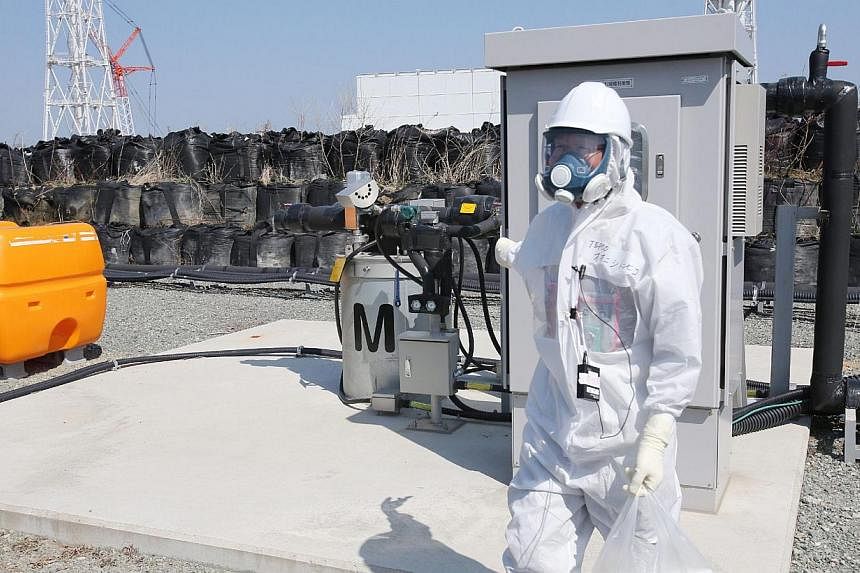TOKYO (AFP) - The operator of Japan's crippled Fukushima nuclear plant said on Wednesday it has begun a bypass system that diverts groundwater into the sea in a bid to reduce the volume of contaminated water.
The move is an attempt to stop tonnes of unpolluted groundwater flowing under the battered plant and mixing with water already there and laced with radioactive isotopes.
Dealing with the huge - and growing - amount of water at the tsunami-damaged plant is proving to be one of the biggest challenges for Tokyo Electric Power (Tepco), as it looks to clean up the mess after the worst nuclear disaster in a generation.
As well as all the water used to keep broken reactors cool, the utility must also deal with all the water that makes its way along subterranean watercourses on its way from mountainsides to the sea - a big contributor to the extra 300-400 tonnes per day.
For the last month Tepco has been pumping up groundwater on the hillside before it enters the plant site, and storing it in tanks.
On Wednesday, engineers started releasing that water after it satisfied quality tests more rigorous than those put in place by the Japanese government or by the United Nations, Tepco said in a statement.
The scheme has met opposition from fishermen in the area who are already battling the perception that their catch is not safe to eat because of pollutants from the plant.
The bypass got the green light after Tepco pledged it would exceed normal safety standards.
"With the bypass system, we are able to reduce by up to 80 tonnes per day" the volume of water that becomes contaminated under the plant, a Tepco spokesman said.
In a test of water samples taken on April 15, the readings for potentially dangerous isotopes, including caesium and tritium, passed its self-imposed operational rules which are stricter than the government regulations.
Readings for the contaminants were just a fraction of the maximum allowed under World Health Organisation guidelines for drinking water, Tepco said.
Meanwhile, thousands of gallons of contaminated water are still being stored at the sites, with no permanent solution so far agreed.
Many experts say that at some point the water will have to be released into the sea after being scoured of the most harmful contaminants.
They say it will pose a negligible risk to marine life or people, but local fishermen and neighbouring countries are fiercely opposed.
Tepco said on Tuesday it had suspended a trouble-plagued system used to clean radiation-tainted water, but on Wednesday the spokesman said part of its Advanced Liquid Processing System (ALPS) will likely resume operation on Thursday.

